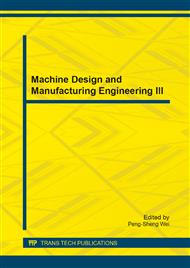p.817
p.821
p.826
p.830
p.835
p.839
p.847
p.853
p.860
Variable Parameters-Based Damage Creep Model of Weak Rock Layer and its Engineering Application
Abstract:
In order to study the deformation mechanism of the weak layer in diabase dikes under long-term loading at a hydropower dam foundation, in situ plate loading tests were performed. A damage creep model which improved the five-parameter generalized Kelvin model was established to describe the creep behavior of the weak layer. In this model, the deterioration effect of the rock parameters is considered and the creep parameters of the rock deteriorate gradually. This model is applied in a slope design for a dam foundation at a hydropower station. Long-term stability of the slope after excavation is evaluated. It shows that when damage creep is considered, the displacement is larger compared with the case of ignoring damage creep. The study shows that the deterioration effect of the rock parameters is of full importance for the project design and construction safety.
Info:
Periodical:
Pages:
835-838
Citation:
Online since:
July 2014
Authors:
Keywords:
Price:
Сopyright:
© 2014 Trans Tech Publications Ltd. All Rights Reserved
Share:
Citation:


